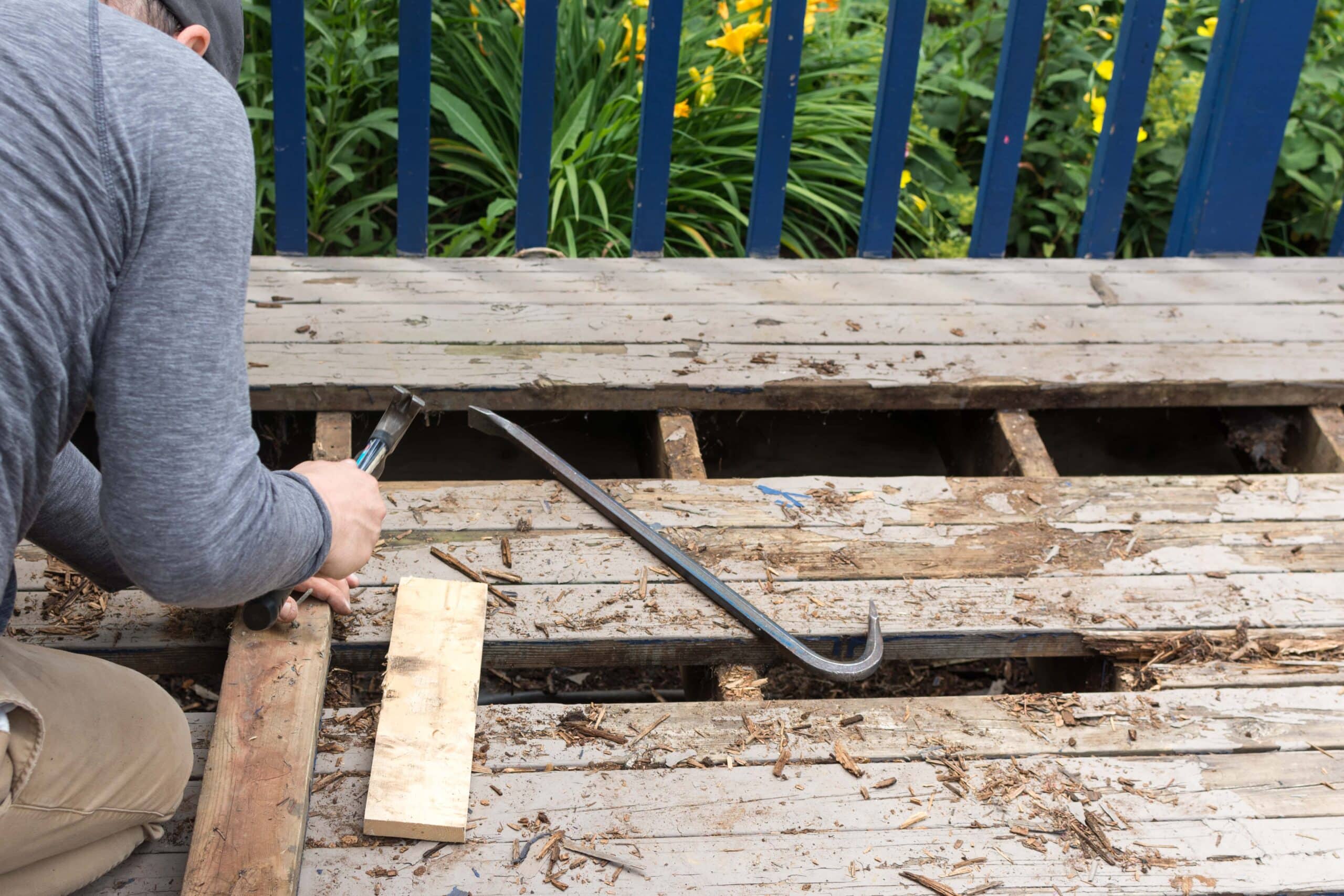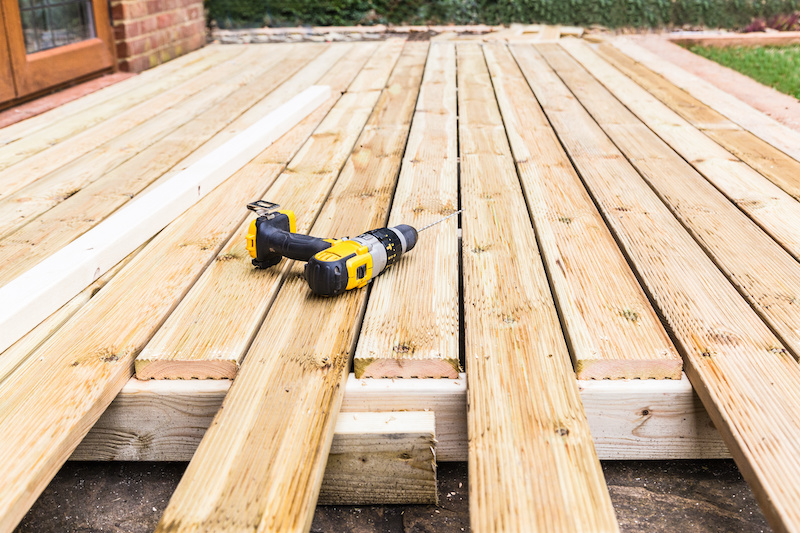Deck Treatment 101: Your Comprehensive Overview to Effective Deck Repair
Deck Treatment 101: Your Comprehensive Overview to Effective Deck Repair
Blog Article
Restore Your Deck's Charm and Functionality: Important Tips for Successful Deck Repair
Deck repair work is a vital part of keeping the beauty and capability of your outside room. Over time, decks can end up being worn, damaged, and shed their appeal. However, with the ideal suggestions and strategies, you can revive your deck and change it into a practical and sensational location once again. From assessing the level of the damages to cleansing, fixing, and applying a fresh coat of paint or tarnish, there are numerous crucial steps to take into consideration in this process. So, if you're aiming to rejuvenate your deck and create an area that you can take pleasure in for many years to come, maintain reviewing to uncover the essential pointers for effective deck fixing.
Evaluating the Damages

Cleansing and Preparing the Surface Area

To start, sweep the deck completely to get rid of loose debris such as fallen leaves, twigs, and dirt. Utilize a rigid brush or broom to scrub away any persistent dirt or stains. For harder stains, you may need to use a deck cleaner or a mild cleaning agent mixed with water. Deck Repair. Apply the cleaner or detergent to the deck surface area and scrub with a brush or a power washing machine, if available, to eliminate the stains.
After cleansing, wash the deck thoroughly with clean water to get rid of any deposit from the cleansing solution. Enable the deck to dry completely prior to waging any type of repair services. This is essential as wetness entraped in the timber can bring about future issues such as warping, deteriorating, or mold growth.
Once the deck is completely dry and tidy, evaluate the surface area for any loose or damaged boards. Change any type of boards that are broken, splintered, or decomposed. In addition, check for any kind of loose or extending screws and nails and tighten or change them as required.
Repairing or Changing Damaged Boards
Fixing or replacing harmed boards is a vital action in recovering the structural honesty and visual appeal of your deck. Over time, direct exposure to Resources harsh weather, moisture, and normal usage can create boards to warp, fracture, or come to be loose. Ignoring these problems can bring about additional damage and endanger read the full info here the safety of your deck.
To begin the repair service procedure, very carefully evaluate the deck boards for any type of signs of damage. For small issues such as loosened nails or small cracks, you may be able to simply fix the board.
However, if the damages is more extreme, it might be essential to change the entire board. Cut the brand-new board to size and safeguard it in location utilizing deck screws or nails.
Keep in mind to choose boards that match the product, color, and texture of the existing deck to maintain a cohesive appearance. Frequently checking and without delay repairing or changing harmed boards will certainly assist prolong the life expectancy of your deck and guarantee its performance and elegance for several years ahead.
Applying a Fresh Coat of Spot or Paint
When invigorating the look of your deck, an important action is applying a fresh layer of repaint or stain. Not only does this give your deck a refreshed and vibrant appearance, but it additionally offers security against the aspects, avoiding rot, decay, and fading created by UV rays.
When picking in between repaint and tarnish, take into consideration the advantages and disadvantages of each. Stain allows the natural grain and appearance of the wood to reveal via, improving the beauty of the deck. It also passes through the wood and provides much better protection against moisture. On the other hand, paint provides a wider selection of shades and gives an extra nontransparent coating, concealing blemishes and providing remarkable UV defense.
Prior to applying the discolor or paint, evaluate it on a little unnoticeable area to guarantee it matches your preferred color and achieves the desired look - Deck Repair. Apply the discolor or paint equally using a roller, brush, or sprayer , adhering to the maker's guidelines. Make sure to use multiple thin layers as opposed to one thick layer to prevent drips and make sure proper protection
After using the fresh coat of paint or tarnish, permit enough drying time prior to making use of the deck. This will certainly stop any kind of damage or smudging of the surface. Routine maintenance, such as cleansing and reapplying the stain or paint every few years, will help expand the life of your deck and maintain it looking its ideal.
Enhancing Safety And Security Features and Ending Up Touches
Safety and security needs to always be a top concern when it comes to deck fixing. Furthermore, including nonslip strips or layers to the deck surface area can greatly minimize the risk of drops and slips, specifically when the deck comes to be unsafe or wet.
One preferred selection is including lighting to the deck area. Not only does this supply extra seating room, however it additionally includes a useful and fashionable element to the deck. Take into consideration including ornamental components such as potted plants, exterior carpets, or ornamental accents to personalize the deck and develop an inviting environment.
Final Thought
To conclude, effectively fixing and reviving your deck calls for assessing the damage, cleaning and preparing the surface area, fixing or replacing harmed boards, using a pop over to this site fresh layer of paint or discolor, and improving security functions. By adhering to these vital pointers, you can recover your deck's elegance and performance, guaranteeing it remains a satisfying and risk-free outdoor room for years to find.
Deck repair work is a vital component of maintaining the elegance and functionality of your outdoor area. If you're looking to renew your deck and develop a space that you can take pleasure in for years to come, keep reviewing to discover the crucial ideas for effective deck fixing.
Fixing or replacing harmed boards is a vital step in recovering the structural honesty and aesthetic appeal of your deck.To start the repair work procedure, very carefully inspect the deck boards for any indicators of damages. Furthermore, adding nonslip strips or layers to the deck surface area can greatly lower the threat of falls and slips, especially when the deck ends up being wet or slippery.
Report this page